Why Does My Baby Throw Tantrums Before Going to Bed
What is toddler tantrum | Types | Terrible-twos | Why older kids also have tantrums | Science of tantrums | Child development | How to deal with | Non-emotional tantrums | Are tantrums normal | Is my child more difficult | When do tantrums start | when do tantrums stop | Getting worse | How to stop it in public | Should I ignore | When should I worry
Toddler tantrums can be frustrating for parents, especially if they happen in public. In this article, you will find out the science behind 2 year old tantrums and how to deal with terrible twos for best child development so that your child won't keep throwing tantrums again and again.
What Is A Terrible-Twos Temper Tantrum
A temper tantrum is an intense storm of emotions, such as anger, loss, disappointment and deep frustration. In toddlers around age 2, this emotional outbreak can lead to crying, thrashing, screaming fits, stomping, hitting the parents, falling down, kicking, biting, throwing things, banging the head or breath holding 1 . This period has been affectionately dubbed the terrible twos.
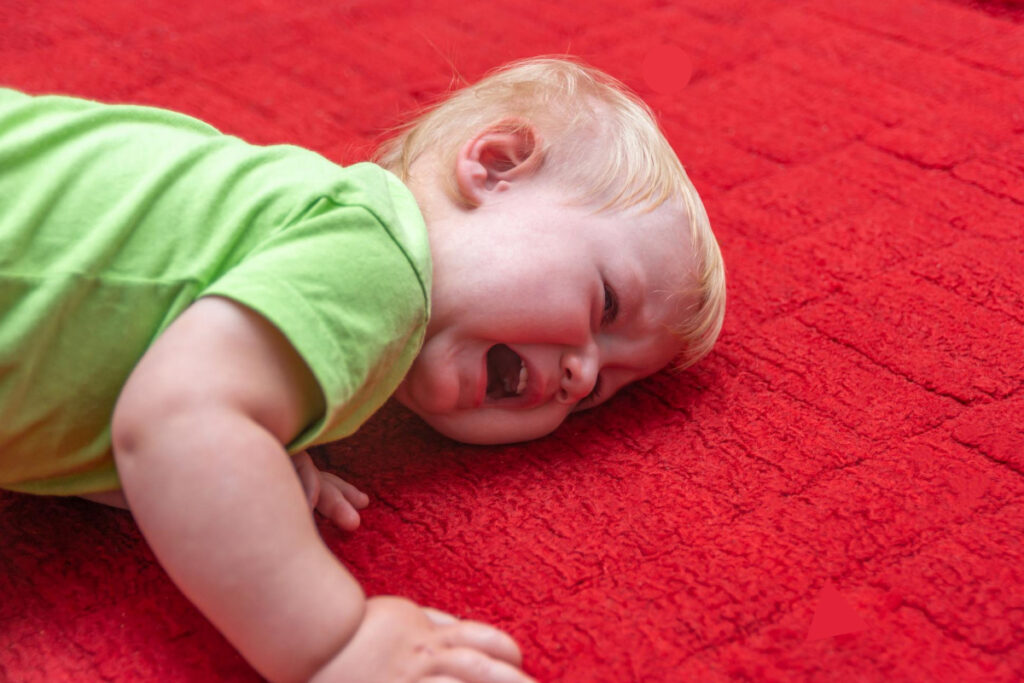
What Are The Two Types Of Toddler Tantrum
There are two types of temper tantrums — emotional meltdown and non-emotional tantrums, sometimes known as a Little Nero tantrum.
Fits and tantrums are not always about trying to control or manipulate parents. An emotional meltdown happens when the emotional part of the brain (limbic) becomes over-aroused and takes over the control from the thinking part of the brain (pre-frontal cortex).
Young toddlers (2-3 yo) are not capable of reasoning or manipulating. They tend to have emotional toddler meltdowns when they're upset.
In older kids (>3.5 yo), it could be a mixed bag. Older children are still not experts in controlling emotions. Therefore, they can have emotional meltdowns, too.
Sometimes, if a parent has given in to the kid's demand in the past, their child then learn to associate throwing fits with getting what they want. So, Little Nero tantrums happen as the result of the associated learning.
However, a kid can start with a non-emotional tantrum but ends with an emotional meltdown when 2 year-old tantrums get out of control.
Why Does a 2 Year Old Toddler Have Terrible-Twos Tantrums
Young children usually start having temper tantrum around two years old. This toddlerhood period is often called the Terrible Twos..
Toddler temper tantrums are natural child behavior. These emotional toddler meltdowns result from unmet needs or desires. They are more likely to appear in toddlers because that's when they start to learn that they're separated from their parents and want to seek independence, and yet they cannot.
Babies come to this world with no knowledge of anything. They have zero understanding of how things work.
Their brains are still developing. So their ability to understand and learn new things is very limited. Kid throwing tantrums is one of very few tools they have to get attention from grownups to meet their needs.
A tantrum-throwing toddler is not a spoiled brat.
Their lives may seem cushy. Sure, I'd like to have 13 hours of sleep every night, all play and no work, all meals prepared for and a bath given while I play with a rubber duck. (ok, maybe not the bathing part).
But toddlers can sometimes go through hellish turmoil inside without us knowing.
Two-year-olds are toddlers. They have just learned how to walk. They want to explore the world, go everywhere and touch everything. They have just discovered how to use tools, but they don't have the motor skills fine-tuned enough to get the results they want.
They look to their parents for safety (exploring something they've never seen before is scary), comfort (I'm so sad I couldn't lift that stool), help (a little help getting that pair of scissors, please?) and sharing joy (look, standing on the high chair, no hands!).
But instead of receiving praises, all they get is parents yelling "no", "stop" and "bad" at them for no reason. WTH? Wouldn't you be upset, too?
To make things worse, when toddlers are upset, they would feel strong emotions that they have yet learned to self-control.
Babies are born with a relatively mature stress response system (crying) for survival reasons, but they are not born with emotional regulation capabilities.
The lack of vocabularies to express themselves also adds to their anger and frustration.
Temper tantrums then become their outlets and their words.
When kids are having emotional temper tantrums and won't stop crying, they are telling us that they're in deep emotional pain and they cannot cope on their own.
In other words, they need our help.
Why Do Some Older Kids Also Have Terrible Twos Tantrums
Terrible twos describe the experience that most toddlers start having childhood temper tantrums at age two.
But like most developmental milestones, each child reaches that stage at a different pace. A baby can start having tantrums at 18 months while another child can start at 3 years old.
Temper tantrums are common in children between the ages of 18 months and 4 years 2 . Therefore, these temper tantrums can last beyond the second year of the child's life.
It's not unusual for a 4 year old to have temper tantrums too, especially if they have not been taught the proper emotional regulation skills.

What Goes On Inside The Toddler – The Science Of Temper Tantrums
When a toddler is overcome by stress such as rage, a little alarm (amygdala) inside his emotional brain (aka limbic or lower brain) is triggered.
When this happens, stress hormones are released to course through the toddler's body and emotions become intense.
This hormonal storm causes anguish and emotional pain which amounts to physical pain.
To control strong emotions, a kid needs to first develop the thinking part of the brain (prefrontal cortex) and then the connections between the thinking brain and the emotional brain.
However, the thinking brain is the last part of the brain to develop and it doesn't completely mature until the mid-20s. This is why even older children can have difficulty controlling their emotions.
Toddler Tantrums & Child Development
At birth, babies have billions of brain cells (neurons) but not many brain cell connections (synapses).
The network of connections is formed through life experiences 3 .
Temper tantrums are some of the most crucial life experiences in sculpting the brain 4 .
Being able to regulate emotions during temper tantrums allows proper brain cell connections to form.
These neural pathways are essential for the child to manage stress and be assertive later in life 5 .
If a kid is not given the opportunity to learn these regulating skills, for example, if temper tantrums are met with anger or punishment, the child may grow up unable to handle stress well or be assertive.
The child may also struggle with internalizing problems (e.g. depression, anxiety disorder) or have externalizing issues (e.g. aggression, oppositional defiant disorder, drug/alcohol abuse).
Emotion dysregulation can also affect future social competence as well as academic performance 6,7 .
But if handled with care, temper tantrums can become an invaluable life lesson in emotion regulation which has been shown to link to resilience in children, social competence, academic success and even popularity 8 .
So remember that not only are temper tantrums a normal part of child development, but they are actually desirable in helping toddlers' emotional development.
Temper tantrums are desirable??
Yes, you read that right.
Dealing with a toddler temper tantrum is not about stopping it. It's about helping the toddler calm their emotions.
Helping toddlers regulate their emotions during temper tantrums is one of the most important jobs in parenting during childhood development 9–11 .
For more help on calming tantrums, check out this step-by-step guide
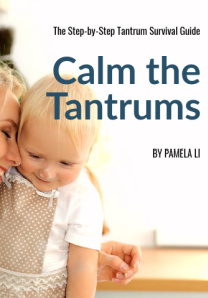

How To Deal With 2 Year Old Tantrums – 7 Proven Steps
To deal with toddler tantrums, here are 7 steps according to science:
- Use Simple Choices Or Distractions To Avoid Toddler Tantrums
When a temper tantrum starts forming, sometimes parents can promptly alleviate it by addressing the issue at hand.For example, if a child doesn't want dinner, instead of forcing her to eat which will bring on more emotions, the parent can ask her to choose to eat the meat or the vegetable first.
When questions with simple choices are presented, the child's thinking brain is activated.
By accessing the child's higher brain, parents may help it stay in control before the emotional brain takes over 12,13 .
Distraction is another way to excite the logical brain.
Distractions such as letting the toddler have another toy (but not the original one she wanted) or singing a silly song can divert the child's attention and raise her curiosity.
Curiosity piques the interest of the logical brain and triggers the release of a feel-good chemical (dopamine) in the brain.
This hormone can reduce stress and increase her interest in the newly presented object or event.
Using simple questions, distractions or other ways to engage your child's critical thinking before emotions escalate to the point of losing control can stamp out a tantrum before it starts.
- Do Not Reason Because They Cannot Hear
Once the tantrum has started, a toddler is flooded with emotions. The emotional brain has taken control, and you cannot reach her thinking brain and verbal functions.So, when a meltdown is in full swing, trying to reason with her or asking her about her feelings is a waste of time. You may end up upsetting her and arousing her emotions even more.
- Restore Emotional Balance And Learn To Self-Regulate
Parents can help restore the hormonal balance inside a child's body by holding or hugging him.Holding or hugging can activate the calming system in his body and triggers another feel-good chemical (oxytocin) that can regulate his emotions.
Make sure you stay calm yourself before doing this. Otherwise, if your own system is not calm, you may make him more stressed.
Sometimes, positive words or acknowledgments alone such as "I know", "you must feel very upset" or "I'm so sorry that you're hurt" are good enough to let your kiddo feel safe and understood.
Parents' empathy and attunement to his feelings not only can soothe the child's emotion, but they can also help build those important pathways between the logical and emotional brains.
It is important to help a child learn to regulate his emotions.
Regularly practice deep mindful breathing can also help a child pay attention to their own emotions.
- Stay Calm, Be Positive But Do Not Give In
Any parent can tell you that toddlers mimic what grownups do.That includes the grownup's control over emotions.
If you get angry and start yelling at the toddler when she throws a tantrum, you are modeling how she should react when things don't go her way.
But if you stay clam, you are teaching her how to face difficulties and upsetting situations without losing control of emotions.
Another reason why you need to stay calm and positive is that emotions, especially negative ones, are contagious.
Being angry or negative will only increase your child's stress.
However, being positive doesn't mean giving in. You can positively acknowledge their frustration while keeping your boundaries.
You can say, "I see that you are very angry and frustrated. I'm sorry. But you cannot have candy right before dinner" kindly and firmly.
Giving in once in a while is particularly bad, because intermittent reinforcement encourages toddler behavior you're trying to stopped like no other. Instead of teaching your child that it's only an one-time exception, you are teaching him that if he's persistent enough, you will cave in eventually.
- Do Not Punish. Time-Out Is A Last Resort
Let's say you are suffering from intense pain.It is so much so that you drop to the ground and writhe.
Do you want your loved ones to punish you, walk away from you or lock you in a room by yourself?
Sometimes temper tantrums may start as means to get something the child wants.
But if left undealt with, it can escalate into a strong hormonal storm which a young child is not equipped to cope with by himself.
When that happens, it becomes a genuine case of uncontrollable anguish and pain.
Punishment, time-out or isolation will add to that pain.
Brain scans show that the pain from social isolation activates the same neural region as physical pain 14 .
Think about this, if you are in intense emotional pain, will inflicting physical pain on you help you feel better?
No, it will not. It will feel like adding insult to injury.
It's the same with your toddler.
In addition, it will teach your child that he cannot trust you to help him or understand his grief when he's in pain and needs you.
If a child learns early on that expressing big feelings will result in parental anger or punishment, he may resort to being compliant or being defiant.
Either way, it means the child will not have the opportunity to form proper brain connections to deal with strong emotions.
When facing frustrations later in life, he may struggle to be assertive or have angry outbursts.
Sometimes, if a toddler in distress is met with negative or lack of responses from his parents, he may stop crying.
But that doesn't mean he is not in distress any more.
Studies have shown that distressed young children can still have high stress hormonal level inside his body despite appearing calm.
In some cases, this dissociation between behavioral and physiological responses can lead to emotional or mental health problems later in life.
Time-out should be used as a last resort.
It should only be used when there is a safe place, the child has hurt someone intentionally such as biting or hitting and he is not already flooded with emotions.
And it should be non-punitively and done in a kind and firm way (see positive parenting).
- Teach Vocabularies and Language Skills So They Can Express Themselves Properly
When the dust has settled, when your child has thoroughly de-escalated from the intense emotional state, you can review what happened with her.Teach her what she can say next time she wants something.
Teach her communication skills. Teach your child how to use words, instead of throwing things, to express her feelings.
Narrating what happened can also help her create those important neural connections to manage emotional situations in future 13,15 .
You can even tell her how you feel when she throws a tantrum.
It says to her that it is alright to have feelings and feelings can be controlled.
You are also teaching her how her action can affect others and what empathy is.
- Prevent Temper Tantrums Before They Appear
There are things parents can do to prevent temper tantrums.Look for HALT:
H – Hunger
A – Anger
L – Lonely
T – TirednessChildren are more prone to throw fits when they are hungry or tired.
When these physical factors are present, all it takes is a trigger to set things in motion.
So, set a schedule of sleep-eat-rest to avoid these tantrum traps.
Being bored, stressed, angry, frustrated or disappointed are also common tantrum triggers.
Prevent temper tantrums from happening from the beginning.
If you know your child will be upset when not getting something, provide alternatives or distractions in advance.
It's much easier to access their logical thinking to prevent temper tantrums than to put them out once they start.
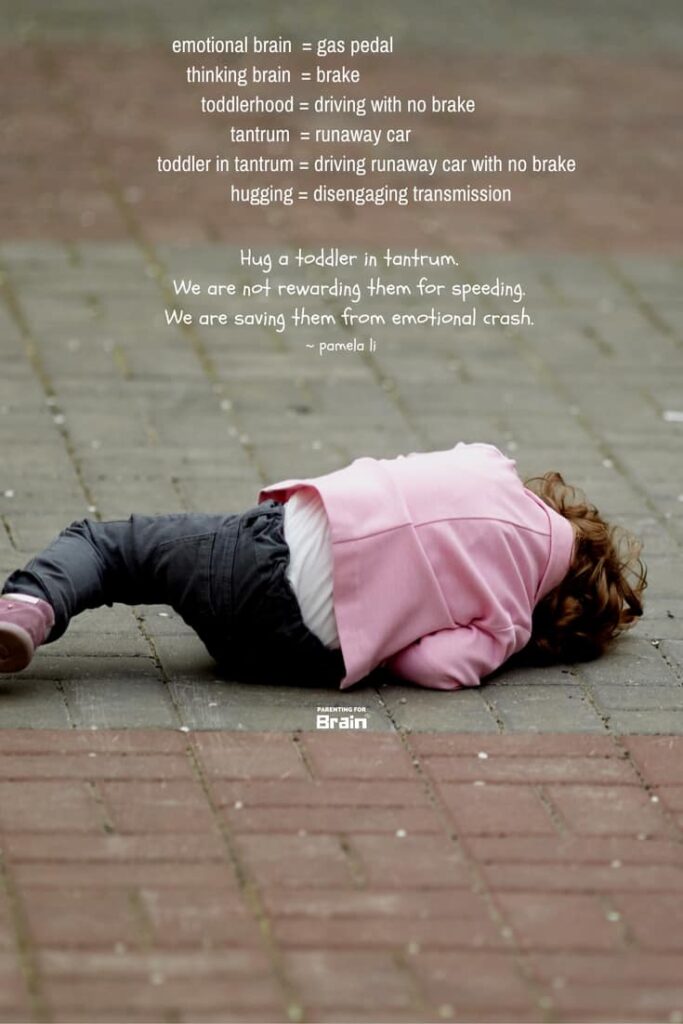
A Little Nero Temper Tantrums (Non-Emotional Tantrums)

There are times when a toddler is behaving like a Little Nero.
He wants something and he won't stop screaming and kicking until he gets it.
When a child is in this power struggle mode, he is not flooded with hormones and intense emotions.
You can tell by the lack of painful expressions on his face and body.
With this type of temper tantrums, most parents know they cannot give in or they would be teaching their little one to use temper tantrum to get whatever they want.
Some people advocate ignoring the child.
But think about it.
How would you feel if you are upset but no one pays attention to you?
You feel more upset!
For a toddler, that's like adding fuel to fire.
If she's old enough to reason, she may understand that it's not working and stop the tantrum.
But if she's too young or too upset to do so, it can push her right into an emotional storm.
Instead of ignoring, acknowledging his desires and mirroring his emotion may be all it takes for him to calm down and be receptive to the enforced boundaries.
Here is an example.
If your child is shouting, "I want this!".
You can mirror his expression and shout mildly back to him, "I know you really want this. You really really want this!"
What you're doing here is attuning to his feelings.
Emotional attunement tells your child that you get it, you get that he's upset.
When your child feels understood, you will have his attention and the rational thinking that comes with it.
It's half the battle won.
The other half is to let him know calmly the reason such as "But I'm sorry. You just cannot have ice cream before dinner."
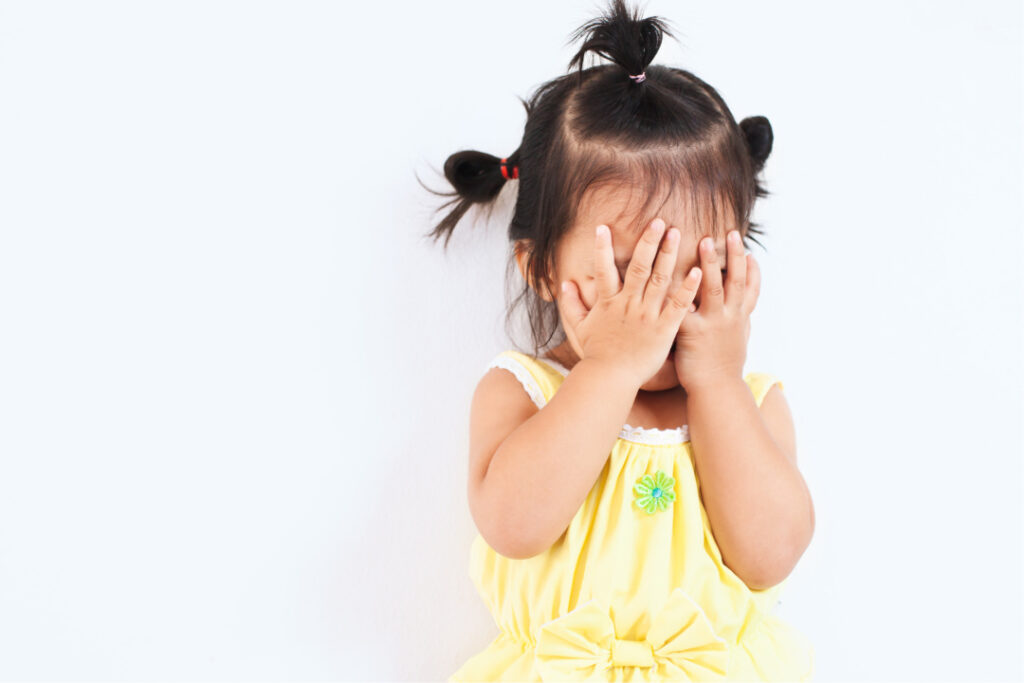
For more help on calming tantrums, check out this step-by-step guide

Are Temper Tantrums Normal
Baby temper tantrums and toddler tantrums are very common 2 .
They are the most common childhood behavioral problems reported by parents.
A study conducted by University of Wisconsin on 1219 families showed that 87% of children at 18-24 months had displayed temper tantrums.
At 30-36 months, 91% did.
The prevalence then decreased to 59% at 42-48 months.
So, you're not alone.
Your child is not bad .
You are not a bad parent.
Why Does My Child Seem More Difficult Than Others?
Why do only some toddlers have tantrums?
It is possible that your child has some inborn temperament traits that fall into the difficult category. Sometimes, these kids are labeled as strong-willed.
But that's not the child's fault that they're born with such temperament.
What works well for easy children may not work for the difficult ones.
For example, simple choices and distractions may not be enough to activate those children's logical brains. You need to do more work to restore your child's emotional balance and spend more time teaching them how to express their feelings with words.
With patience and persistence, even difficult children can learn to integrate their logical and emotional brains and stop using temper tantrums as outlets.
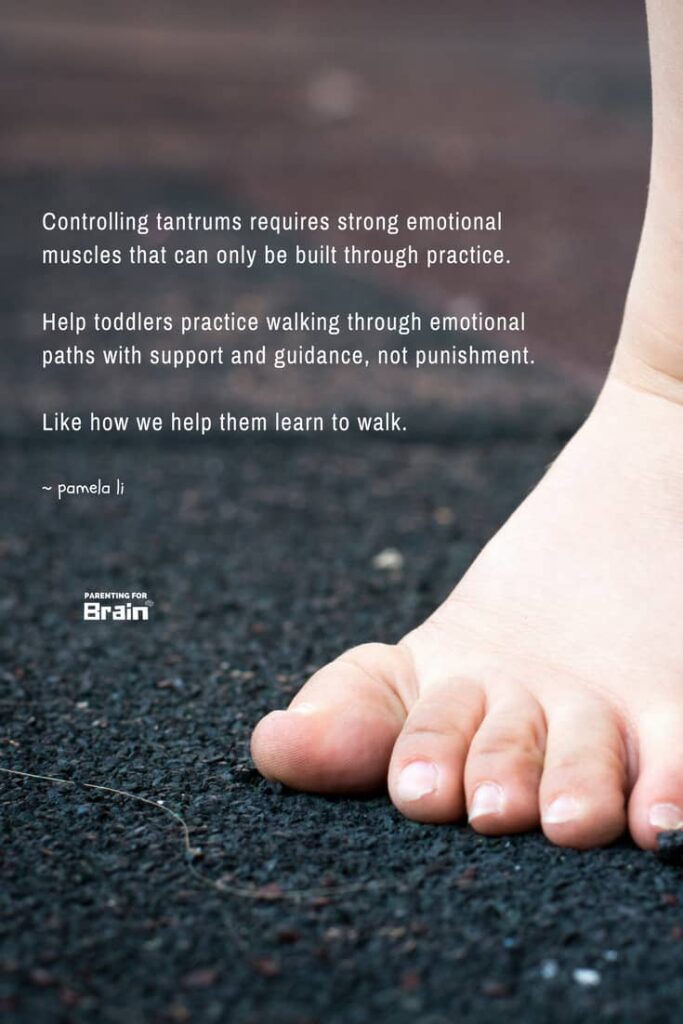
When Do Tantrums Start
Toddler temper tantrums usually begin in children at 12 to 18 months old, when toddlers start becoming mobile but don't yet have the language skills to express their needs. 19 month old tantrums and 20 month old tantrums are also very common.
At What Age Should A Child Stop Having Tantrums
Most terrible-twos tantrums end at around the age of 4 if the child has developed emotional regulating skills. Unfortunately, not all kids can do that. Even adults can have tantrums or explosive episodes if they didn't learn any coping skills when they were kids.
What Should I Do If My 3 Year Old's Temper Tantrums Are Getting Worse
A 3 year old's temper tantrums can get worse if the child hasn't learned the proper emotional regulation skills, if the child has learned to use toddler tantrums all day to get what they want, or if the child has both.
There are several possibilities some children cannot learn appropriate emotional regulation skills.
A lack of a positive environment or role model is a common cause. Emotional regulation is not a skill we are born with. Human cannot learn to "self-soothe" just by being left alone during toddler tantrums to cry. It's crucial that parents follow the strategies above to teach children emotional regulation skills.
Another cause could be that the child has a more reactive nervous system that is harder to calm, such as some kids with ADHD or Autism. If you suspect your child has special conditions, consult the pediatrician to make sure you get proper information and help.
Parents also need to hold boundaries consistently to prevent a 3 year old's temper tantrums from getting worse.
Parenting is hard work. Sometimes, we are tempted to give in "just this one time" so we can get on with our lives. Resist the temptation to do so because that will only make your child associate tantrums with getting what they want, leading to more tantrums down the road.

How To Stop A Child's Temper Tantrums In Public
Stopping a child's temper tantrums in public, such as when grocery shopping or in the toy store, doesn't require special treatment different from the strategies above. The goal of handling toddler tantrums is to help kids develop emotional regulation skills. To do that, we need to be good role models in regulating ourselves. We need to show them that we can focus on helping them rather than feeling embarrassed by them.
When we know that we are doing the best for our kids' development, there really isn't anything we should feel embarrassed about. If the commotion is bothering others, I will move the child to another location and continue to help them calm down. If someone is making judgmental comments, I usually smile and keep doing what I know is the best for my kid.
Is Ignoring Toddler Temper Tantrums A Good Strategy?
When kids have real, non-emotional tantrums to get what they want, ignoring may be a good response.
However, it is hard for most parents to objectively determine if a child is having a non-emotional tantrum or an emotional one.
Many over-worked and exhausted parents are overcome by their own emotions when facing their kids' tantrums. These emotions often affect our judgment and make us feel manipulated even when the child is not manipulating. It takes a very calm and clear-headed parent to decide if a child is truly having a Little Nero tantrum.
In addition, ignoring only teaches that the child's behavior is undesirable. It doesn't teach what the child should do.
Therefore, ignoring toddler temper tantrums has its time and place, but should not be a go-to method.
Toddler Tantrums All Day: When Should You Worry
American Academy of Pediatrics recommends that you call your pediatrician or family physician if 16 :
- Temper tantrums get worse after age 4
- Your child injures himself or herself or others, or destroys property during temper tantrums
- Your child holds his or her breath during temper tantrums, especially if he or she faints
- Your child also has nightmares, reversal of toilet training, headaches, stomachaches, anxiety, refuses to eat or go to bed, or clings to you
More Toddler Tantrums Help
If you are looking for additional tips and an actual step-by-step plan, our Calm The Tantrums is a great place to start.
It gives you the steps you need to calm toddler tantrums, teach them self-regulation and promote their brain development.
In this toddler tantrum guide, you will find the top three ways to avoid meltdowns, the strategies for parents to stay calm, and the best way to handle hitting.
Once you know the strategies to calming tantrums, terrible-twos will no longer be terrible.
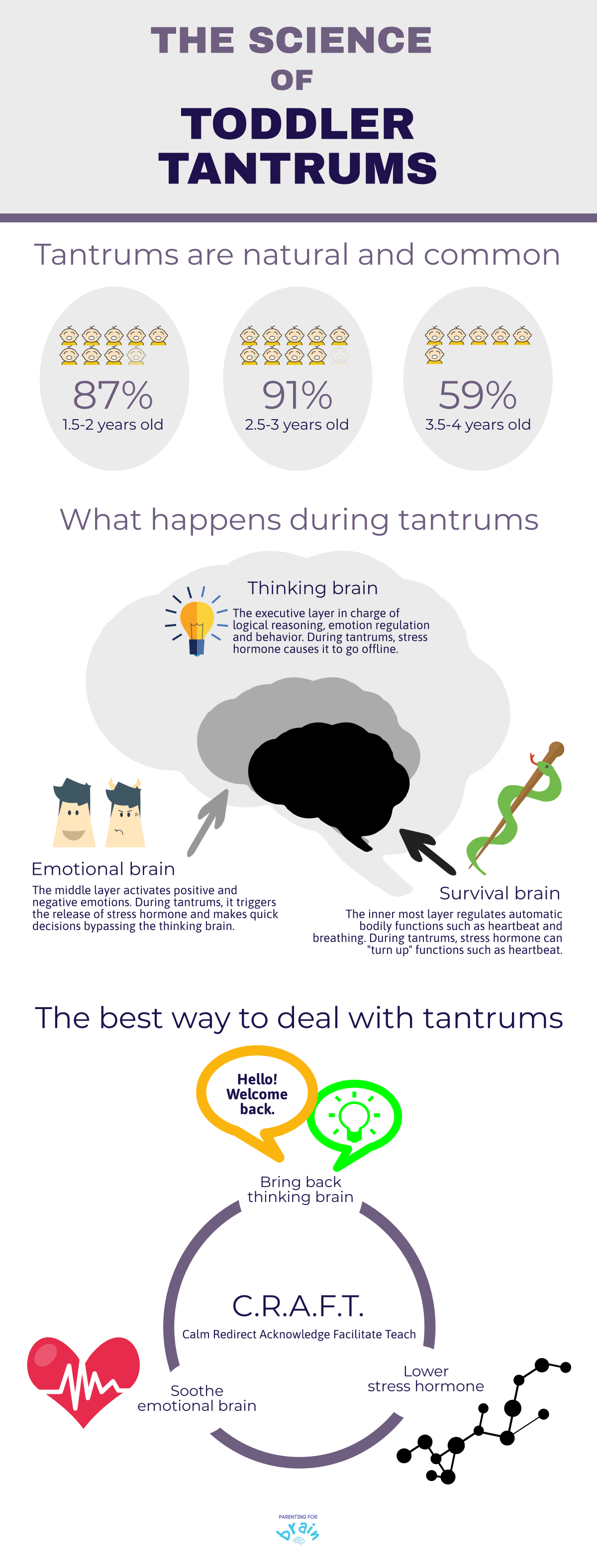
References
-
1.
Goodenough FL. Anger In Young Children. The University of Minnesota Press; 1931.
-
3.
Greenough WT, Black JE, Wallace CS. Experience and Brain Development. Child Development. Published online June 1987:539. doi:10.2307/1130197
-
4.
Porges SW, Furman SA. The early development of the autonomic nervous system provides a neural platform for social behaviour: a polyvagal perspective. Inf Child Develop. Published online April 22, 2010:106-118. doi:10.1002/icd.688
-
5.
Gunnar MR. Quality of Early Care and Buffering of Neuroendocrine Stress Reactions: Potential Effects on the Developing Human Brain. Preventive Medicine. Published online March 1998:208-211. doi:10.1006/pmed.1998.0276
-
6.
Denham SA, Blair KA, DeMulder E, et al. Preschool Emotional Competence: Pathway to Social Competence? Child Development. Published online February 2003:238-256. doi:10.1111/1467-8624.00533
-
7.
Spinrad TL, Eisenberg N, Cumberland A, et al. Relation of emotion-related regulation to children's social competence: A longitudinal study. Emotion. Published online 2006:498-510. doi:10.1037/1528-3542.6.3.498
-
8.
Trentacosta C, Shaw D. Emotional Self-Regulation, Peer Rejection, and Antisocial Behavior: Developmental Associations from Early Childhood to Early Adolescence. J Appl Dev Psychol. 2009;30(3):356-365. https://www.ncbi.nlm.nih.gov/pubmed/20161105
-
9.
Morris AS, Silk JS, Steinberg L, Myers SS, Robinson LR. The Role of the Family Context in the Development of Emotion Regulation. Social Development. Published online May 2007:361-388. doi:10.1111/j.1467-9507.2007.00389.x
-
11.
Denham SA, Mitchell-Copeland J, Strandberg K, Auerbach S, Blair K. Motivation and Emotion. Published online 1997:65-86. doi:10.1023/a:1024426431247
-
12.
Derryberry D, Tucker DM. Neural mechanisms of emotion. Journal of Consulting and Clinical Psychology. Published online 1992:329-338. doi:10.1037/0022-006x.60.3.329
-
13.
Hariri A, Bookheimer S, Mazziotta J. Modulating emotional responses: effects of a neocortical network on the limbic system. Neuroreport. 2000;11(1):43-48. https://www.ncbi.nlm.nih.gov/pubmed/10683827
-
14.
Eisenberger NI. The Neural Bases of Social Pain. Psychosomatic Medicine. Published online 2012:126-135. doi:10.1097/psy.0b013e3182464dd1
Disclaimer
* All information on parentingforbrain.com is for educational purposes only. Parenting For Brain does not provide medical advice. If you suspect medical problems or need professional advice, please consult a physician. *
Why Does My Baby Throw Tantrums Before Going to Bed
Source: https://www.parentingforbrain.com/deal-toddler-temper-tantrums/
0 Response to "Why Does My Baby Throw Tantrums Before Going to Bed"
Yorum Gönder